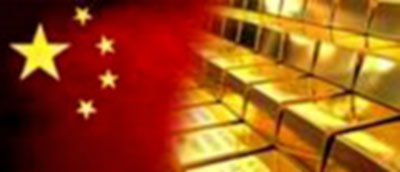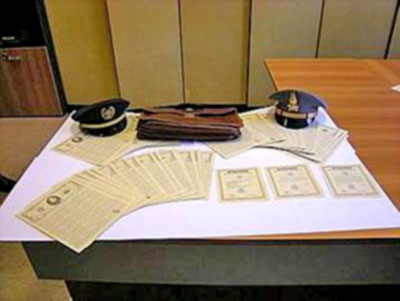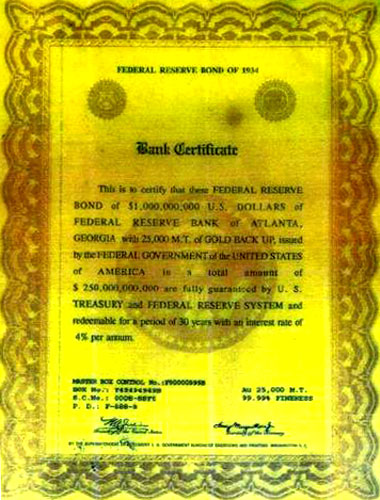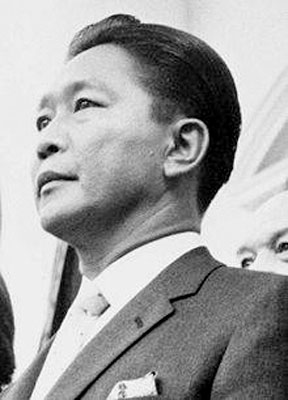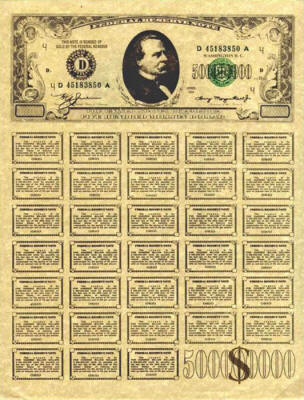by Michael E. Salla, MA., Ph.D.
February 8, 2012
Introduction
One of the enigmas of U.S. trade policy is the willingness of policy makers to allow China open access to U.S. markets while China throws up many obstacles to American imports.
This has predictably led to the US China trade imbalance becoming an issue in the U.S. Presidential Republican campaign.
In an interview on Fox News on February 2, 2012, Republican Presidential front runner, Mitt Romney, declared:
On my first day in office, I will label China a currency manipulator and under US law once that label has been affixed the president is able to apply tariffs to any of their goods ... I’ve made it very clear to the Chinese that’s where we’ll go if they continue the practices they’re pursuing right now.
Romney’s get tough on China rhetoric impressed Donald Trump who promptly endorsed Romney for the Republican Presidential Primary.
“I love what Mitt was saying about China and the rest of the world, which is just absolutely ripping us off and trying to destroy this nation with a smile. And I think that Mitt Romney really sees China for what they are.”
It is a fact that China maintains a huge trade deficit with the U.S.
The exchange rate of China’s currency, the Renminbi, is kept artificially low making it very difficult for U.S. products to compete with cheap Chinese imports. Imports of Chinese products have devastated the U.S. manufacturing industry. To make matters worse, China establishes tariffs on a range of key U.S. export products, such as automobiles, making it even more difficult for the U.S. to reverse the trade deficit which continues to grow.
Compounding the issue is China’s flagrant violation of intellectual property laws where Chinese firms pirate many U.S. products with almost total impunity thereby removing another means of balancing the trade deficit.
The trade imbalance has led to China accumulating vast reserves of US dollars, becoming the biggest purchaser of U.S. treasury bonds, and becoming America’s chief creditor.
According to the U.S. Treasury, as of November 2011, China held 1.1 trillion dollars in U.S. treasury securities.
All this has U.S. Republican presidential candidates and many economists speaking out loudly against China and calling for retaliatory measures such as tariffs, getting tough on Chinese violation of intellectual property laws, and pressuring China to revalue its currency.
So,
-
Are Romney, Trump and a host of prominent economists correct about China?
-
Do they make a compelling case for abandoning a bad China trade policy?
The problem is that what Romney, Trump and other China trade policy critics miss is that the trade deficit is not a result of a poorly thought out U.S. trade policy.
In fact the U.S. trade policy with China has been meticulously thought out. There is growing evidence that it is payback for the CIA’s decades long covert use of China’s “black gold” - gold that does not appear on any international gold registry.
China’s “black gold” has been hidden for over six decades in order to fund a globally coordinated set of covert projects hidden from public view by the CIA and a consortium of national intelligence organizations and transnational corporations - a Global Manhattan Project.
Two very recent court cases and a June 2009 incident on the Italian/Swiss border involving high denomination 1934 Federal Reserve notes reveal a remarkable historical fact. During the Second World War era, vast quantities of Chinese gold reserves were either looted and hidden by the Japanese Imperial Army in the Philippines, or transferred by the Chinese Nationalist government to international safe havens.
The biggest beneficiary of this vast historical movement of “black” gold was the U.S. government which arranged for a significant portion of China’s “black” gold to be transferred into the US. Federal Reserve system, and Federal Reserve bonds and/or notes issued in return.
The holders of these high denomination Federal Reserve bearer bonds/notes - often the descendents of Chinese/Asian royal families - could only redeem these bonds after lengthy periods of time, e.g., five decades.
As a safeguard to ensure the “black gold” would not become publicly tradable, the Federal notes/bonds were printed with spelling errors and other abnormalities that would make them appear fraudulent. Attempts to redeem these bearer bonds have been unsuccessful.
This has led to court cases and financial incidents that have drawn media attention over the high denomination bonds in dispute and their validity. Most public media attention wrongly concludes that these bonds are fraudulent as outlined in a recent Bloomberg article focusing on bonds found in the Philippines.
Two recent court cases citing meticulous fact checking and documentation of these high denomination 1934 bonds, suggest otherwise.
1. Dragon Family Trillion Dollar Lawsuit
Specimen of a 500 million 1934 Federal Reserve Note
A mysterious trillion dollar lawsuit filed on November 23, 2011 in the U.S. District Court for the Southern District of New York, claims that 145.5 billion dollars worth of gold was secretly given to the U.S. government in the mid-1930s by the then Nationalist government of China for safekeeping.
The lawsuit claims that 1934 U.S. Federal Reserve notes were issued to the Chinese government, and the gold transferred to the Federal Reserve Bank:
Upon information and belief, between 1927 and 1938, as a result of arrangements made between China and the United States, the United States… leased vast amounts of gold from the nationalist Chinese Government, known as Kuomintang.
During this period, China was partly occupied by Japanese troops and there was a fear of China being overrun by the Japanese.
It is claimed that a total sum of almost one trillion dollars representing both the principal and accumulated interest of the 1934 Federal Reserve notes was fraudulently taken from the plaintiff, Neil Keenan, an agent for the owners, a mysterious Asian entity called “The Dragon Family.”
Plaintiff Neil Keenan claims he was entrusted in 2009 with the financial instruments - which included U.S. Federal Reserve notes worth $124.5 billion, two Japanese government bonds with a combined face value of $19 billion, and one U.S. "Kennedy" bond with a face value of $1 billion - by an entity called the Dragon Family, which is a group of several wealthy and secretive Asian families.
The Japanese bonds and Kennedy bond were allegedly added to the initial bond issue as interest.
To calculate the total amount of gold ‘leased’ by China’s nationalist government to the Federal Reserve we can use the 1938 historic figure (below image) for the price of gold which was $34.87 per troy oz. $124.5 billion converts into an approximate total of 3.6 billion troy oz or 110 thousand metric tons
Given that the world’s total gold reserves is officially only 165 thousand tons, this is a staggering amount of gold that was secretly leased from China’s nationalist government.
Using the current spot price of gold, nearly $1700 per troy oz, the value of Chinese gold in possession of the Federal Reserve has a price of six trillion dollars! This is more than double the total income for the 2012 U.S. federal budget of 2.6 trillion dollars.
Surprisingly, there appears to be another similar size cache of gold that was leased by China as an incident on the Swiss-Italian border in 2009 illustrates.
2. The Italian/Swiss border “Chiasso Incident”
US Federal Reserve Notes seized
near Chiasso, Switzerland by the Italian Financial Police
In June 2009, two Japanese citizens - Akihiko Yamaguchi and Mitsuyoshi Watanabe - were caught on a train in Italy while traveling to Switzerland with a total of 134.5 billion dollars in US Federal Reserve notes, bonds and other financial instruments.
According to Asia News, the seized financial instruments comprised:
“249 US Federal Reserve bonds worth US$ 500 million each, plus ten Kennedy bonds and other US government securities worth a billion dollar each.”
The bonds were confiscated by the Italian financial police and the two Japanese arrested, and then later released.
According to the November 2011 District Court filing by Keenan, the bonds apprehended near Chiasso, Switzerland in June 2009 were genuinely issued by the Roosevelt administration in exchange for gold deposited by the Nationalist Government of China some time before the Japanese invasion on July 7, 1937.
The bonds seized near Chiasso, are separate to the bonds allegedly stolen from Keenan later in November 2009 as described in the Keenan law suit:
Upon information and belief, such bank capitalization [$145 billion contested in November 2011 lawsuit] was to include yet another approximately One-Hundred Thirty-Four Billion, Five-Hundred Million Dollars ($134,500,000,000,000) Dollars of financial instruments also owned by the Dragon Family, including FRNs and Kennedy Bonds virtually identical to the DFFI [Dragon Family Financial instruments] which were seized on the Italian/Swiss border in June 2009. [p. 10]
The US Federal Reserve notes seized at Chiasso in June 2009 was $124.5 billion out of a total of $134.5 billion.
Combined with the $124.5 billion later taken from Keenan in November 2009 - the subject of the November 2011 lawsuit - that means that a total of $249 billion of Federal Reserve bonds were issued for China’s gold. Again using the 1938 figure (far above image) for the price of gold ($34.87 per troy oz), this suggests that the amount of gold ‘leased’ by China’s nationalist government was a total of 7.2 billion troy oz or 220 thousand metric tons.
That is more than the worlds total gold reserves of 165 thousand tons.
Again, using the current spot price of gold, $1700 per troy oz, the value of Chinese gold in possession of the Federal Reserve has a price of twelve trillion dollars! This is close to the entire US Gross Domestic Product which in 2010 was 14.5 trillion dollars. Could such vast quantities of gold be secretly in circulation?
Another U.S. District Court case suggests that indeed such quantities do secretly circulate.
3. Joseph Riad versus Department of Homeland Security Lawsuit
A lawsuit revealing multi-billion dollar gold certificates issued by the U.S. Federal Reserve was lodged in the Pennsylvania District Court in December 2011.
The case was reported on December 23, 2011 by Courthouse News. The lawsuit again reveals the redemption efforts by private entities who came into possession of the Federal Reserve bearer bonds.
The case involves a total of $750 billion in gold certificates placed in three ornate chests created in the 1930s by Chinese artisans work for the then nationalist government. The case has been analyzed in by Wilcock in an investigation into immense quantities of “black” gold originating from China.
The core complaint of the lawsuit is that Nicholas Jones, a U.S. Federal Agent in the Department of Homeland Security, defrauded the plaintiff, Joseph Riad, of gold backed Federal Reserve bearer bonds totaling $15 billion out of the total amount of $750 billion.
"Plaintiff has spent the previous nine (9) years engaging various and numerous experts and legal counsel so as to thoroughly and conclusively establish the existence, veracity, and authenticity of his bonds."
After Riad submitted 15 of the bonds to Agent Jones from the Department of Homeland Security acting in an official capacity for the purpose of redeeming the bonds, Riad was defrauded as outlined in the complaint:
Agent Nicholas Jones, as an agent of the United States and in his individual capacity, intentionally and willfully interfered with the personal property of Plaintiff sufficient enough to exercise complete and total dominion or control of Plaintiff’s fifteen (15) one billion dollar gold-backed bearer bonds when he refused to return said bonds to Plaintiff upon request that he do so by Plaintiff.
This case reveals how elements within the U.S. Federal Government set out to defraud private investors and/or those representing the owners of the 1934 Federal Reserve Notes, by pretending to redeem them, but with no intention of doing so.
In what Riad refers to as a “Affidavit of Procurement,” he describes the origins of the notes and claims that the,
“bonds was provided to the Chinese Government through the bank of China” (sic).
So again, we have an ongoing court case involving large denomination Federal Reserve notes/bonds issued against Chinese gold.
According to the gold certificate included in each of the three chests, the Chinese gold held as collateral for the bond issue amounted to 250 billion dollars for 25,000 metric tons.
This comes out to a staggering 75,000 metric tons of gold in total for the $750 billion. Almost half of the world’s known gold supply!
The conversion rate comes out to $310 per troy oz which was the gold spot price in 1979. This suggests the 1934 Federal Reserve bonds were issued to the bearer in 1979 for the gold collateral (75,000 metric tons) even though the chests and Federal Reserve bonds were created around the same time in the 1930s.
So it appears that some entity linked to the U.S. government released or traded the 1934 bond issue for the hidden Chinese gold in 1979.
The Riad Court case reveals that the entity in question has individuals such as Nicholas Jones embedded in select U.S. government agencies such as the Department of Homeland Security. According to Fletcher Prouty, a former U.S. Army Colonel, the U.S. government agency that regularly embeds personnel in other federal departments/agencies is the Central Intelligence Agency.
I have shown in an earlier paper titled “The Black Budget Report,” that the CIA is the agency responsible for generating revenue for highly classified covert U.S. projects.
It’s highly likely that the Riad case illustrates how the CIA sometime around 1979, traded some of the Chinese gold secretly hidden in remote locations in the Philippines as persuasively argued by David Guyatt in The Secret Gold Treaty.
4. Chinese/Asian Gold hidden in the Philippines during WWII
Guyatt conducted extensive research to investigate claims by an Australian investor who was charged with possessing fraudulent US Federal Reserve bonds.
During his research, Guyatt found that black gold was a highly sought and traded commodity in the world of covert operations. He found that much of the looted gold was moved during the Japanese occupation of China and other Asian nations.
Guyatt describes a Japanese official, Kodama, responsible for hiding much of China’s and Asia’s looted gold in the Philippines:
Kodama worked for the Japanese prince who headed the Japanese secret service and who was overlord of the Japanese plunder teams known as "The Golden Lily."
The Golden Lily operated in Mukden in Manchuria, but had its headquarters in Manila, the capital of the Philippines.
Kodama was tasked with,
"shepherding masses of war loot in naval vessels ahead of him under the watchful eye of naval officers seconded to him."
The loot had been plundered from all over Asia under Kodama'a authority and was moved "up the coast of Borneo through Brunei to the Philippines," where it was eventually buried.
Ferdinand Marcos
President of the Philippines - 1965 - 1986
Importantly, a young Philippines lawyer learned of this looted Asian gold hidden in his country, and began receiving political favors for its covert trade. The lawyer, Ferdinand Marcos, eventually become the Philippines most powerful politician in recent history.
Guyatt reveals how Marcos rose in power and influence as a trustee over “black gold” that was under the nominal control of the Vatican:
Father Diaz was entrusted by the Vatican to take charge of Vatican gold buried on the Philippines. The “Vatican gold” was identified as bullion that had been “captured by Hitler” and that had belonged to the royal families of Europe and been placed under the trusteeship of the Vatican. Also included was gold plundered by the Japanese…
Quoting Marcelino Tagle, an ex-Catholic priest and director of the Caritas charity organization, Guyatt revealed:
Fr. Diaz had,
“assumed several names when he moved to the Philippines.”
One of these was,
“Col. Severino Sta. Romana.”
Placing a value on the Sta. Romana gold as $50 trillion, Tagle noted that Sta. Romana had,
“hired the young Marcos as his lawyer and trustee.” …
Giving evidence to the Philippine Senate Blue Ribbon Committee on 14 October 1999, Tagle noted that Marcos, in his capacity as lawyer and chief trustee of Sta. Romana,
“succeeded in isolating the nominees or trustees of the gold certificates from the physical assets - so much so, that it is almost impossible to recover them without piecing the various pieces like a mosaic.”
By abusing his position of trustee, Marcos effectively gained control of Sta. Romana’s gold and, later, when he had become President, used the “Central Bank to transact the gold.”
Guyatt cites Sterling Seagrave, author of the Marco Dynasty, that as Philippines President (1965-1986), Marcos secured,
"…large loans using as collateral gold bullion that he was as yet unable to get out of the Philippines."
“the CIA was actively participating in laundering Marcos bullion.”
The CIA’s involvement was directly related to funding covert operations in a network of global locations using looted Chinese/Asian gold.
In addition to laundering drug money on behalf of its owners, the CIA, Nugan Hand Bank is believed to have been heavily involved in the transfer of large quantities of so-called "Marcos" gold flown by CIA pilots from Clark AFB in the Philippines to the secret US Pine Gap facility located at Alice Springs, Australia.
Undoubtedly, much of the black gold arriving in Pine Gap would have been used for funding the base and its covert projects for many years without any oversight by the U.S. or Australian governments.
So how much of China’s/Asia’s gold was hidden in the Philippines by Japan? We know already that as much as $50 trillion was taken there according to Marcelino Tagle.
We now know that just one Golden Lily “777” treasure site was worth almost $200 billion in 1945 US dollars. We also know that there were dozens of triple seven sites, plus some triple nines and, of course, tens of dozens of smaller troves.
In fact, Japan’s Golden Lily teams stashed plunder in a minimum of 172 burial sites on the Philippines alone. A reliable estimate is that the value of gold at these 172 sites collectively totaled $100 trillion in 1945 US dollars - a figure that simply dwarfs the present day global debt. This sum is so massive as to be virtually incomprehensible - yet it probably does not include the complete figures, as we shall see.
We now know that just one Golden Lily “777” treasure site was worth almost $200 billion in 1945 US dollars.
This vast quantity of secretly hidden but covertly traded “black gold”, as much as $100 trillion in 1945 dollars, helps explain why the US. Federal Reserve decided to issue such high denomination bonds/notes as one billion in 1934.
Converting this astronomical figure into 2012 terms using the annual CPI increase, means as much as $1,200 trillion of black gold was hidden in the Philippines alone!
Given that the entire planet’s GDP is approximately 63 trillion dollars, that means that the hidden Philippines gold could fund the entire planet’s economy for nearly 200 years!
5. Conclusion
What the above two court cases and Chiasso incident reveal is that vast quantities of Chinese “black gold” were taken out of mainland China and leased to the U.S. government and Federal Reserve Bank.
High denomination 1934 Federal Reserve Notes and Bonds were issued to representatives of the former Kuomintang government and/or Asian royal families that claimed ownership to much of this wealth. After a period of time, the Kuomintang and/or the royal families would want to redeem these Federal Reserve bonds, and enlisted Western financiers and investors to help in the process.
Not that successfully as the above two court cases reveal.
In addition to the gold secretly leased to the U.S, vast quantities of “black gold” looted from China and other Asian countries by Japan’s Golden Lily teams ended up in the Philippines, and to a lesser extent in Indonesia according to Guyatt. The quantities involved go as high as $100 trillion in 1945 dollars, or 1,200 trillion in 2012 dollars!
This gold was covertly traded during the Marcos regime with the assistance of the Vatican and CIA.
For all the principal parties, the black gold offered the opportunity for almost unlimited funds for covert projects and profits for middlemen such as the Marcos family.
Given that much of the black gold hidden in the Philippines was looted out of mainland China by Japanese Golden Lily teams during the World War II era, the Peoples Republic of China (PRC) would have much to say about the ownership and use of black gold hidden in the Philippines. The existence of Taiwan (Republic of China - ROC) conflates the ownership issue of the Philippines “black gold” since it creates a buffer to ownership claims by the People’s Republic.
Perhaps this is why the U.S. was such an important historic supporter of Taiwan, ensuring that the People’s Republic of China was only admitted to the UN in November 1971.
Currently, the U.S. Seventh Fleet patrols the waters between Taiwan and mainland China ensuring the former’s independence.
Given the legitimate interests of the People’s Republic of China over the ownership and use of black gold hidden in the Philippines, and/or leased by the Kuomintang, it’s natural to assume some deal was struck to appease China by the main beneficiary of the covert trade in black gold - the United States!
This deal was to basically open the U.S. economy to Chinese products so that China could be silenced and paid back in part for looted Chinese gold that remains hidden in the Philippines with no timeline over when and if it will be ever repatriated.
So what entity in the U.S. government is the main conduit for this covert trade in black gold?
As implied in the Riad case, where the defendant is an agent with the Department of Homeland Security, the main conduit appears to be the CIA. This CIA connection is discussed at length in Guyatt’s book, The Secret Gold Treaty. While central bankers, shady investors, and middlemen have made untold millions in profits from the covert trade in black gold, this is only a trickle of the vast amounts of revenue that changes hands.
Most of the revenue raised by the black gold trade is used by the CIA to fund a covert Global Manhattan Project.
In an earlier article, I cited Inspector General reports that the CIA in the three year period from 1998 to 2000 laundered up to 1.7 trillion dollars annually through the U.S. Department of Defense. In a subsequent article, I showed how the CIA was instrumental in setting up the Bilderberg Group in 1954 to fund a global Manhattan project.
What is this Global Manhattan Project focused on? That is the multi-trillion dollar secret - a secret that the People’s Republic of China is paid off to keep through a highly favorable U.S. trade policy.
Republic Presidential candidates along with many economists will likely protest loudly what appears to be an illogical trade policy and promise to get tough on China during the 2012 Presidential election.
Such protests are unlikely to succeed as long as covert CIA funding of a Global Manhattan Project using looted Chinese/Asian “black gold” continues to be a highly classified secret kept from the global public
